The old .30-30 Winchester (or .30 WCF, for .30 Winchester Center Fire) has been around for a long time — since 1895, to be exact.
In this day of carbon fiber barrels, folding stocks, Christmas tree reticles, and cartridges that can take out a critter in another zip code, is this old creature still relevant?

As my Swedish friend Lars is in the habit of saying, “Ja sure – you betcha!” Even though it’s been around for well over a century, it still outsells some modern cartridges intended for the deer woods.
Why, you ask? Well, let’s explore! We’ll recommend some of our favorite models and give you some background on the history of this storied cartridge.
THE QUICK LIST
-
Editor’s Pick
-
Best Traditional Rifle
-
Best Value
-
Best Modern .30-30
-
Most Affordable
Table of Contents
Loading…
How We Chose the Best .30-30 Rifles
Input from this article came from various writers and members of the Pew Pew Tactical staff. We used a mix of hands-on experience with some of the exact models listed and experience with other similar makes and models in different configurations.
We chose these guns based on reliability, accuracy, fit and finish, price, and overall value.
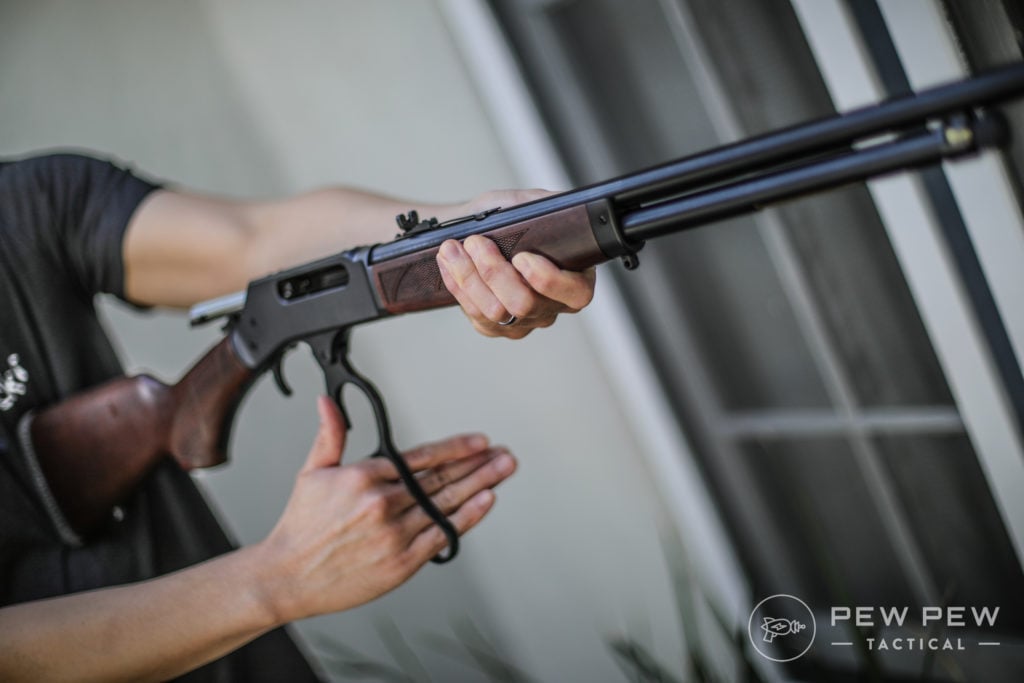
Best .30-30 Rifles
1. Marlin 336 Classic – Editor’s Pick
Prices accurate at time of writing
Prices accurate at time of writing
-
25% off all OAKLEY products - OAKLEY25
Copied! Visit Merchant
Pros
- Ejects brass to the side
- Drilled and tapped for scope rings
- Pistol-grip stock
Cons
- Sells out fast
- Expensive
Specs
- Caliber: .30-30 Win
- Action: Lever action
- Capacity: 6+1
- Barrel Length: 20″
- Stock: Black walnut
- Optic-Ready: Yes
My all-time favorite lever action in .30-30 is the Marlin 336.
Marlin was acquired by Remington in 2007 and subsequently acquired from Remington by Ruger in 2020. There was a large gap in the production of the 336, but the rifles have just started limited production again under Ruger in the last few months.

Marlin only produces the 336 Classic in the 20-inch barrel right now, but that is the barrel length you want if you want optimal ballistic performance.
Why do I like this gun? There are three main reasons.
First, it uses side ejection rather than top ejection. Spent cases come out the side, which makes way for my second reason: scope mounting.
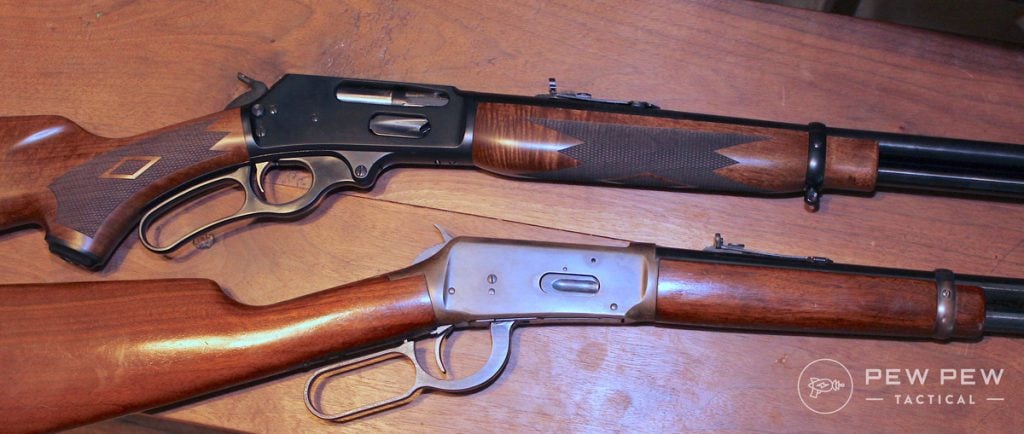
You can easily mount a scope or red dot on the top of the receiver since hot brass isn’t bouncing off it as it exits the rifle. (I’m personally not a fan of scopes on lever guns, but that’s just me).
The last reason is that it is the only one on the list to have a pistol grip stock. That does aid a bit when you’re shouldering the rifle (at least for me).
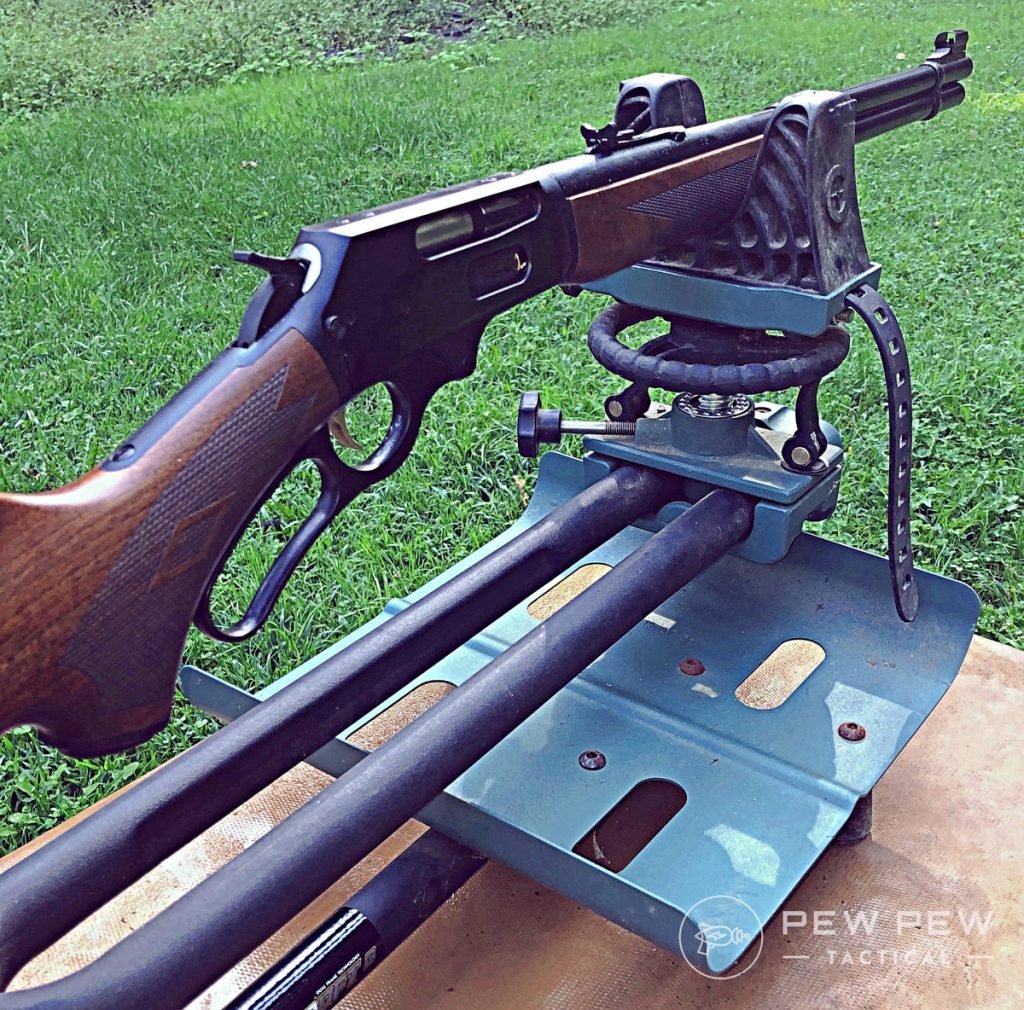
The new classic versions are admittedly much more expensive than the older versions. If you can find one of these used, especially a pre-Remington model with a “JM” stamp, check it out.
Check out our full review of the Marlin 336 Classic!
2. Winchester Model 94 – Best Traditional .30-30 Rifle
Prices accurate at time of writing
Prices accurate at time of writing
-
25% off all OAKLEY products - OAKLEY25
Copied! Visit Merchant
Pros
- American history in your hands
- Excellent build quality
- Slim and easy-handling
Cons
- Can be hard to find
- Expensive
Specs
- Caliber: .30-30 Win
- Action: Lever action
- Capacity: 7+1
- Barrel Length: 20″
- Stock: Black walnut
- Optic-Ready: Yes
Oliver Winchester was not the first to produce a lever rifle, but he sure put his stamp on it. His lever rifle of 1866 gave the original Henry a run for its money.
Winchester kept upgrading his guns, culminating in the most popular of them all, the Model 1894.
If you’ve seen many Western movies or TV shows (especially those featuring the Duke), you’ve most likely seen two iconic firearms…the Colt 1873 “Peacemaker” revolver and the 1894 Winchester lever rifle.
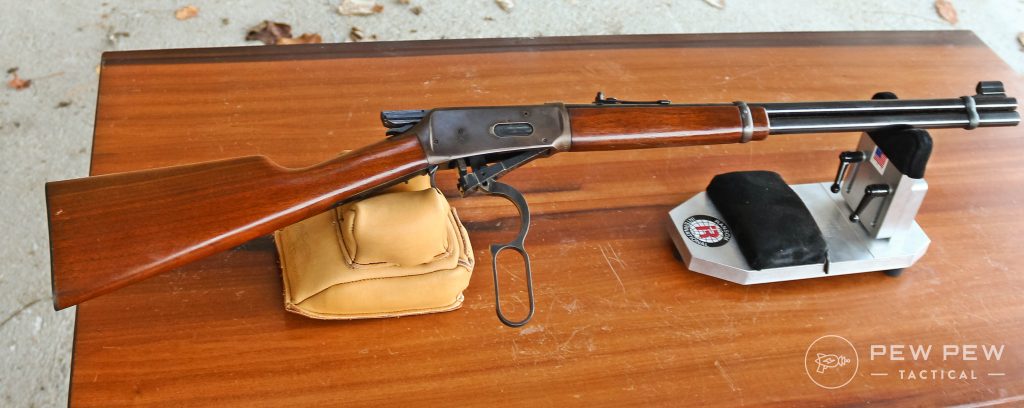
John Wayne’s 1892 Winchesters sported a large loop that allowed him to twirl it around and cock it. It locked the lever rifle’s popularity in the minds of shooters at the time.
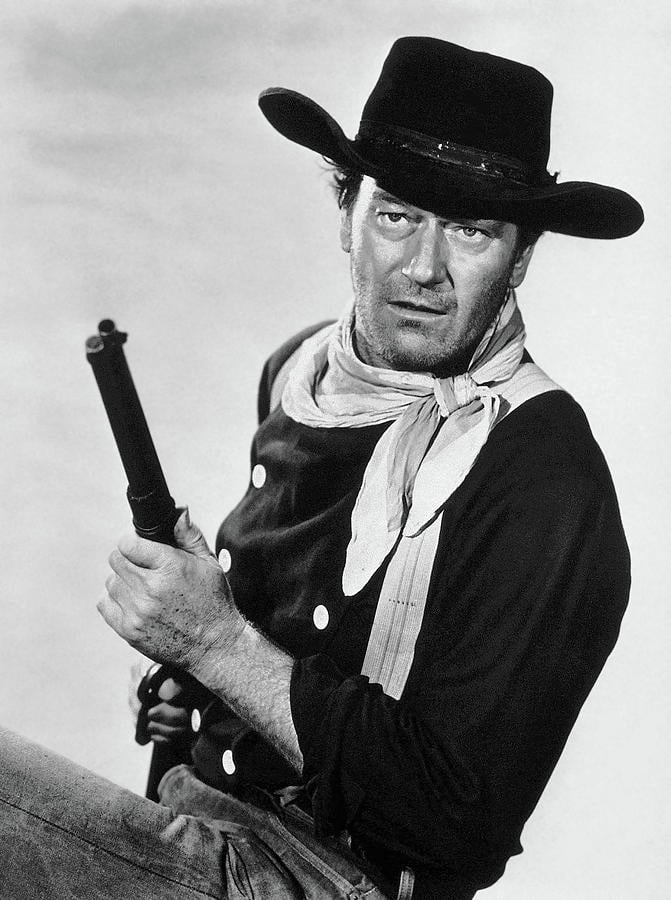
Here is why I like the Winchester: First, it is iconic. I don’t use that term a lot because I want it to mean something, so when I use it, I mean it.
The Winchester rifles are the lever-action rifles that won the West in many people’s minds.
Whether you’re John Wayne on a movie set or a hunter headed to the deer woods, you could surely do worse than to have one of these in your hand.
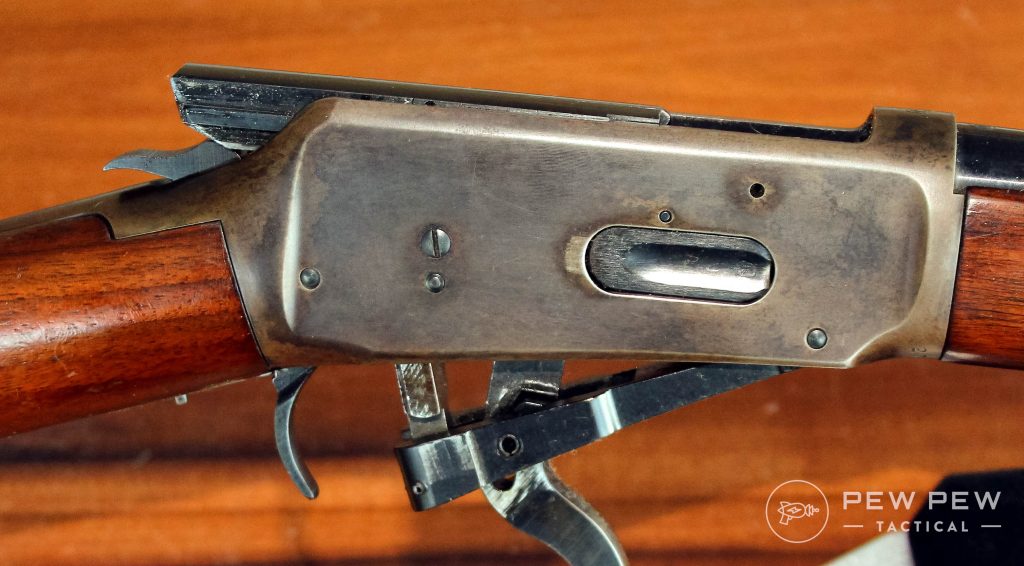
Secondly, it’s a quality firearm. It’s built to last. My brother had a rimfire version back in the ‘80s, a 9422, and it was very well-made, reliable, and accurate — they’re just good guns.
Although Winchester stopped mass production of these in 2006, they still sell high-end versions of the Model 94.
As with the Marlin, the current production versions are expensive, but the long-time popularity of the Model 94 means the used market is flush with them.
3. Henry Side Gate .30-30 – Best Value .30-30 Rifle
Prices accurate at time of writing
Prices accurate at time of writing
-
25% off all OAKLEY products - OAKLEY25
Copied! Visit Merchant
Pros
- Side gate makes loading and unloading easy
- Durable finish on the receiver
- Also available in .45-70
Cons
- Good quality but not fancy
Specs
- Caliber: .30-30 Win
- Action: Lever action
- Capacity: 5+1
- Barrel Length: 20″
- Stock: American walnut
- Optic-Ready: Yes
Henry makes over a dozen configurations of .30-30 rifles, but I settled on the blued steel side gate model for a couple of reasons.
Many Henrys load only via the magazine tube by twisting the end plug to open the port, sliding the mag tube out, and dropping in the cartridges.
However, the side gate models allow you to load the rifle via a gate on the right side of the receiver while still being able to use the regular tube loading method.
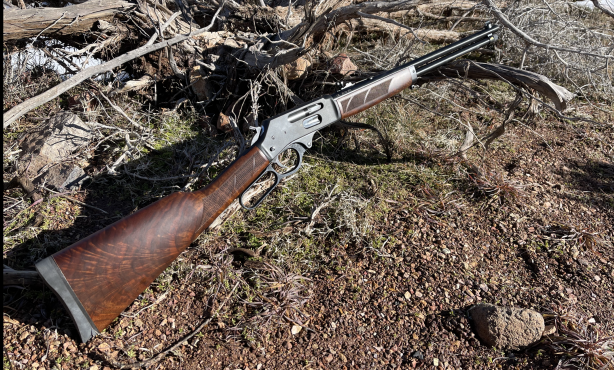
The other reason I chose this one is the blued finish on the steel receiver. It’s subtle enough for a hunting rifle.
Henry sent me a Big Boy .44 Magnum with a polished brass receiver for a review a few years ago. I say polished; I mean polished!
You could use it as a mirror to check your teeth or comb your hair, but I was hesitant to take it into the woods because I didn’t want to scratch it up.
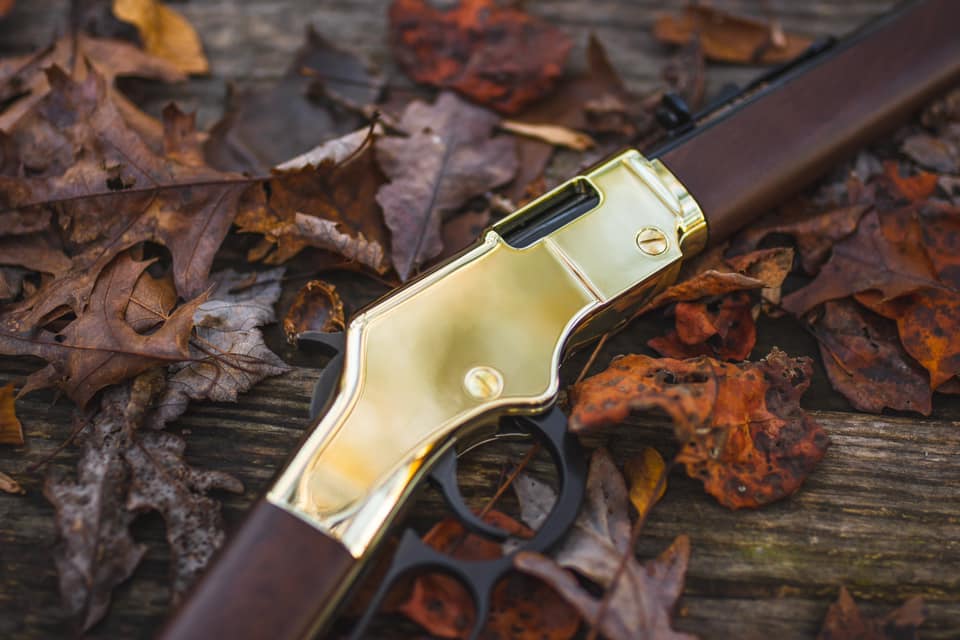
I also don’t want the sun to catch it and send up a flash that might spook whatever critters were in the vicinity, hence my preference for the less-flashy finish.
Another plus is the inclusion of sling studs. It also features a brass bead on the front sight and is drilled and tapped for scope mounts.
Henry’s quality is legendary. The company builds some truly excellent rifles, and everything is made in the United States. Prices range from $800 to $1,000, which isn’t too bad for a quality lever-action deer rifle in these inflationary times.
4. Marlin 336 Dark Series – Best Modern .30-30
Prices accurate at time of writing
Prices accurate at time of writing
-
25% off all OAKLEY products - OAKLEY25
Copied! Visit Merchant
Pros
- Add all your attachments
- Threaded barrel (muzzle brake included)
- Light and compact
Cons
- So much for old-school charm
- Expensive
Specs
- Caliber: .30-30 Win
- Action: Lever action
- Capacity: 5+1
- Barrel Length: 16.17″
- Stock: Nylon-reinforced polymer
- Optic-Ready: Yes
Lever-action rifles and the .30-30 Win cartridge have always had a classic, old-school vibe. Lately, firearms manufacturers have been turning that philosophy upside down with blacked-out polymer lever guns that look like they belong in a video game, not a tree stand.
Even Marlin is jumping on the trend with the 336 Dark Series.
This rifle shares its action with the 336 Classic, but the barrel is cut to carbine length and black polymer replaces black walnut.
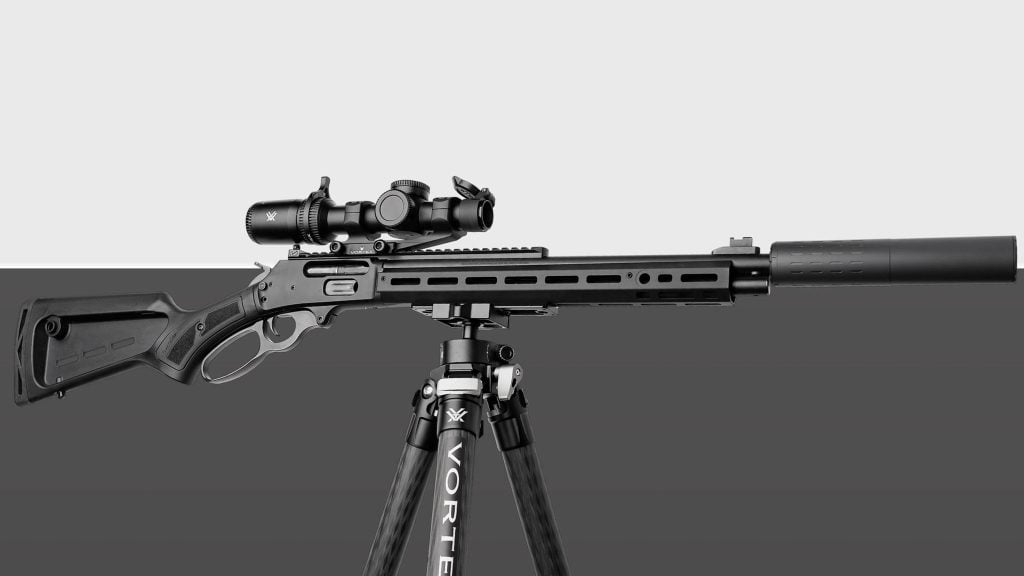
Want to accessorize your rifle? This is the lever gun for you. The stock has an M-LOK forend and QD points for a sling. The long Picatinny rail is way more user-friendly than tapped holes if you want to mount a scope.
Under that brake is a threaded muzzle, so you can even add a suppressor. What a time to be alive!
What do you think of the Marlin 336 Dark? Rate it below!
5. Rossi R95 – Most Affordable
Prices accurate at time of writing
Prices accurate at time of writing
-
25% off all OAKLEY products - OAKLEY25
Copied! Visit Merchant
Pros
- Multiple models available
- Affordable
- Easy to find
Cons
- Not as refined as our other picks
Specs
- Caliber: .30-30 Win
- Action: Lever Action
- Capacity: 5+1
- Barrel Length: 16.5-20″
- Stock: Walnut, laminate
- Optic-Ready: Yes
Rossi has been a quiet contender in the lever-action game for a while now.
Although they are known more for their revolver-caliber R92 series, they broke the mold when they introduced their R95 series in 2023 — and with it came the option for .30-30.
They offer four different models: A walnut 20-inch standard loop model, a walnut 16.5-inch Trapper large loop model, a 16.5-inch “triple black” model with a Picatinny rail and threaded barrel, and a gorgeous 20-inch stainless steel and laminate model.
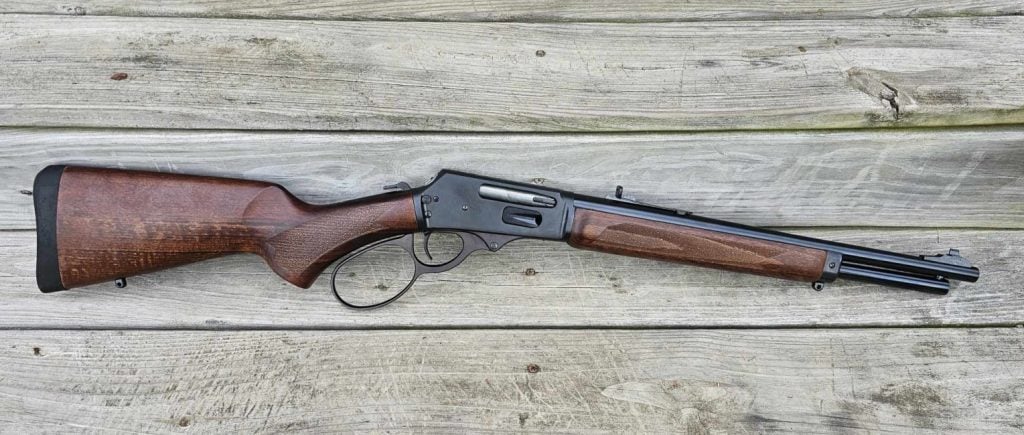
The 16.5-inch Trapper and 20-inch standard models are the cheapest in the lineup, with the Trapper model being our favorite of the bunch due to its maneuverability and handy configuration.
These rifles have checkered hardwood walnut furniture, adjustable buckhorn sights, and a side-loading gate, and are drilled and tapped for scope mounts. Capacity on all models is 5+1.
To be honest, lever-action rifles have gotten outrageously expensive over the last 5-10 years. If you missed that train or don’t have an inheritance gun waiting, it can be hard to spend $800-1200 on a lever gun.
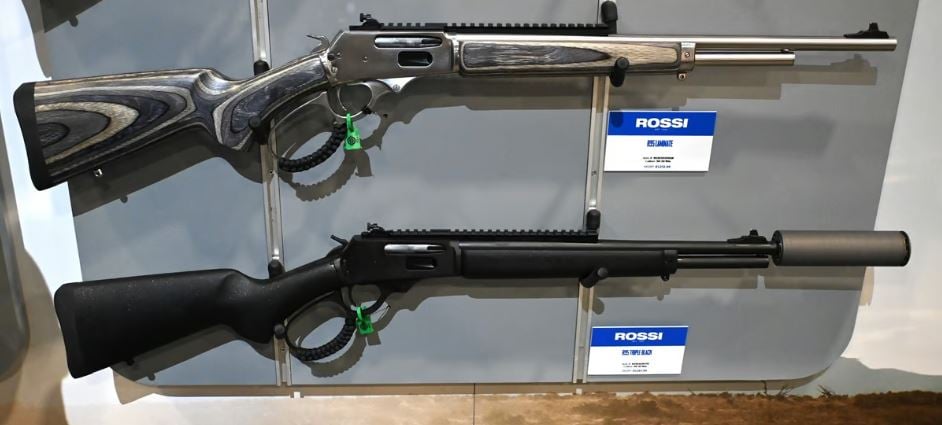
While the R95s don’t have the nicest fit and finish or an iconic name attached to them, they are notably more affordable than their competitors while still giving the user a quality lever-action experience.
History Of The .30-30 Winchester
One of the reasons that the .30-30 Win is still popular is that it still works.
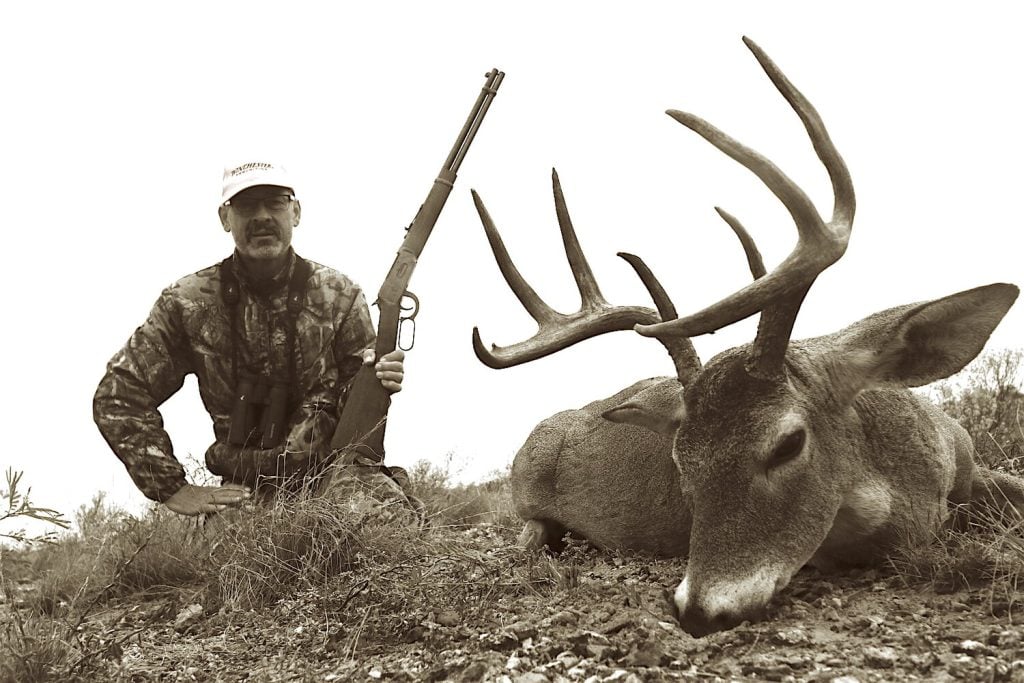
In 1895, hunters were largely equipped with lever actions. The Winchester 1894 had just been introduced and was selling like hotcakes.
But it was available in only two calibers: .38-55 and the .32-40 Winchester. The former was slow and heavy; the latter failed to produce 1,000 foot-pounds of energy.
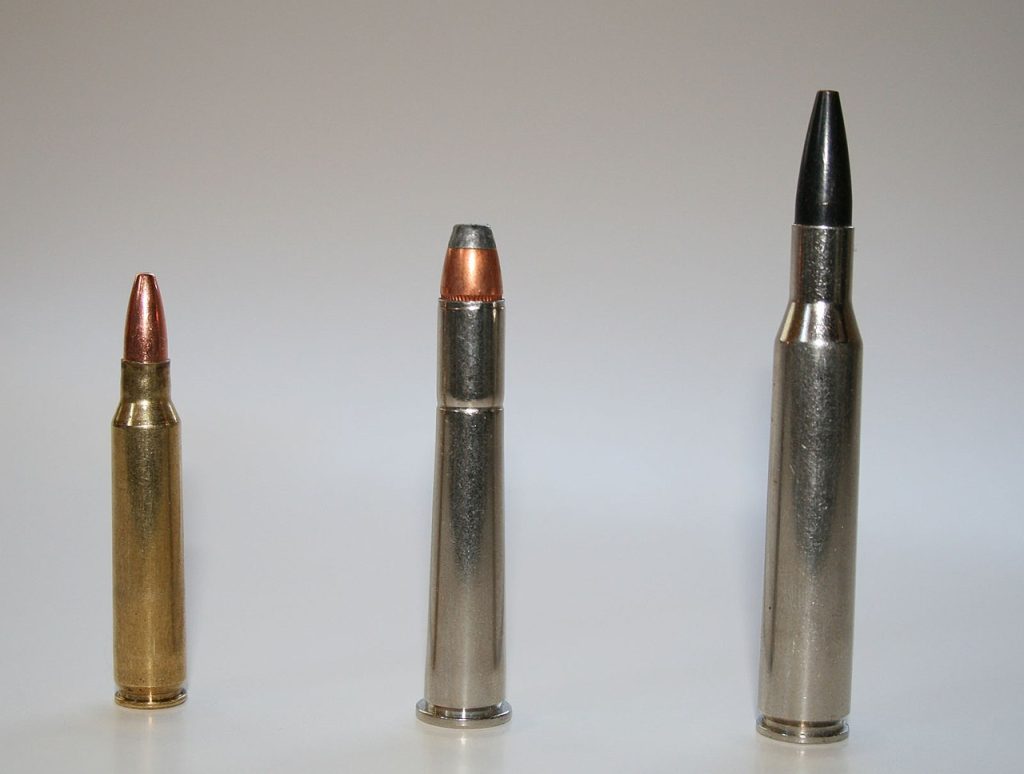
So, Winchester introduced a .30 caliber round that pushed a 160-grain bullet at 1,970 feet per second, delivering around 1,400 foot-pounds of energy.
This was a godsend for deer and other hunters, who snapped up rifles in the new caliber.
Enter Marlin
Marlin, the storied manufacturer of lever rifles and a direct competitor to Winchester, was not to be left behind.
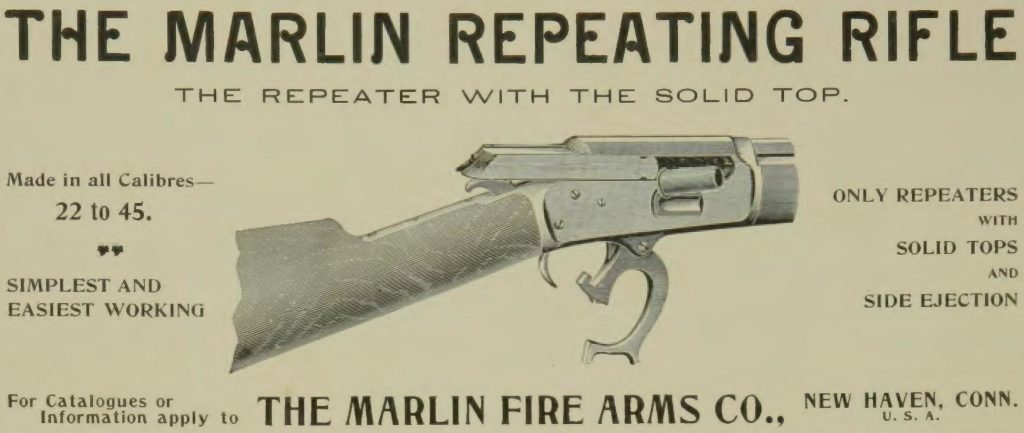
When Marlin brought out the 1893 lever rifle in .30 WCF, they renamed it the “.30-30,” the name we use today.
They and the Union Metallic Cartridge Company did not want to give free publicity to a competitor by calling the cartridge by its .30 Winchester name.
With both companies now building rifles in this new and more powerful caliber, it took off.
Why is .30-30 Still Popular?
This old boy still has plenty of zip out to about 200 yards with modern ammunition, making it a viable choice for medium-sized game like deer, hogs, and even black bears.
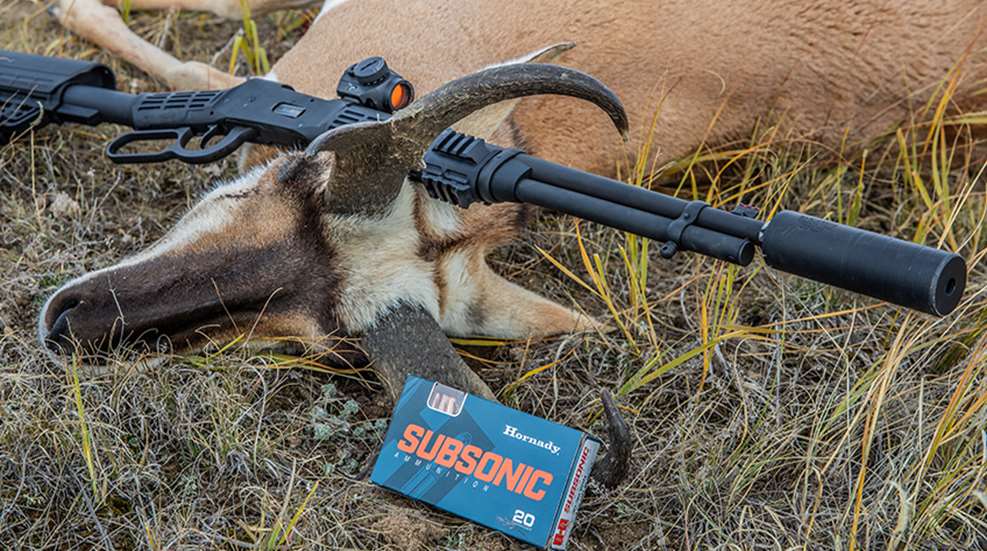
With ammo readily available and rifles for sale, the .30-30 remains a winner.
Even in lightweight lever guns, the .30-30 delivers less than 11 pounds of recoil energy — about half that of the .30-06.
Previously, lever-gun users were stuck with only round-nose bullets to prevent the tip of the round from hitting the primer of the next round in the magazine tube and causing a detonation.
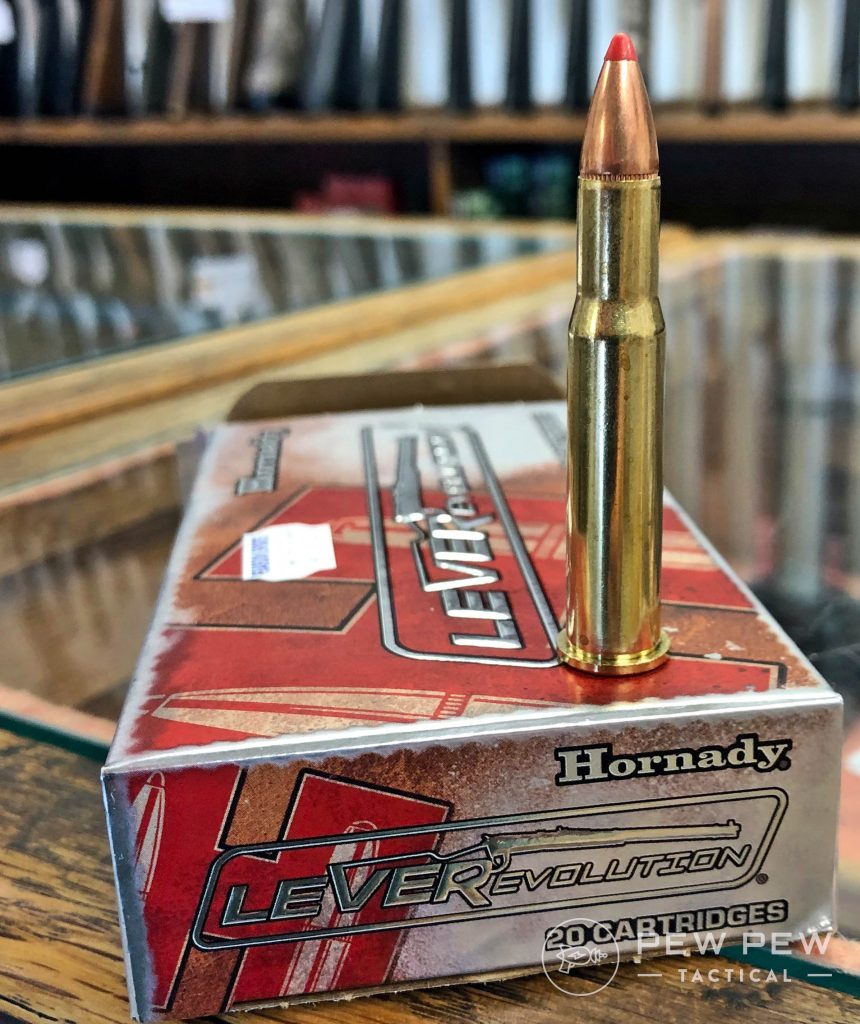
Hornady created LeverEvolution ammo, which uses a polymer tip to avoid any unintended primer strikes. This allows the use of bullets with better ballistic coefficients and expansion, which has ultimately helped .30-30 stay relevant in today’s market.
So, why is it still popular? Simple: it gets the job done out to 150 yards and doesn’t beat you up doing it.
FAQs
What is the effective range of a .30-30 rifle?
A .30-30 rifle will have enough power to hunt deer-sized game out to at least 100 yards. Modern ammunition will stretch that closer to 200 yards.
Is .45-70 more powerful than .30-30?
Yes, .45-70 is significantly more powerful than .30-30. It also experiences much more elevation loss at 100 yards and recoils much harder.
Is .30-30 overkill for deer?
No way! The .30-30 Win is one of the most iconic deer-hunting cartridges in American history, and it's still popular today.
Final Thoughts
Can you buy a deer rifle with more oomph, better ballistics, and a flatter trajectory than the .30-30? For sure.
Let’s face it, many cartridges and rifles outdo the .30-30 in several ways, but that doesn’t diminish its capabilities. More isn’t always better.
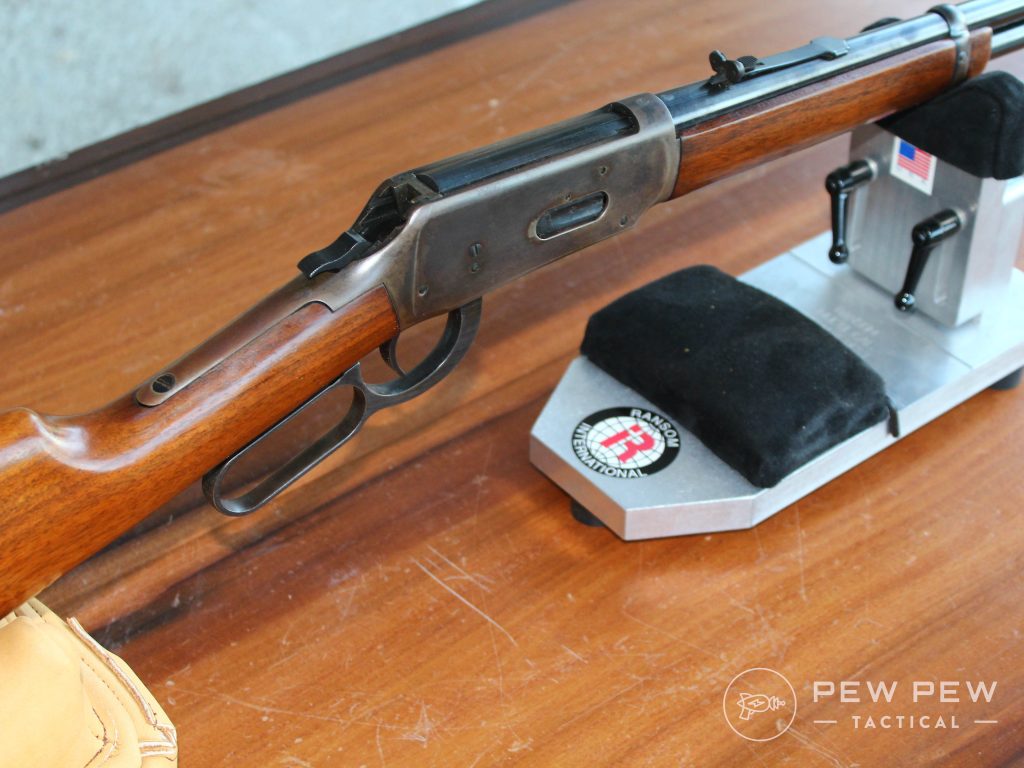
If you want a round that will put deer-sized game down out to 150 yards or so and not abuse your shoulder (or your wallet) in the process, the .30-30 still has a winning recipe. If you’ve never shot one, you need to.
Do you have any experience with the .30-30? Is it still relevant to you? Let us know in the comments below! Already have one? Check out our guide to the best .30-30 Ammo!
Latest Updates
July 9, 2024: Added the Rossi R95 and included more information on how we selected the models included on our list in the How We Chose section.
June 3, 2024: Added information to product selections, removed the Mossberg 464, and added the Marlin 336 Dark Series.

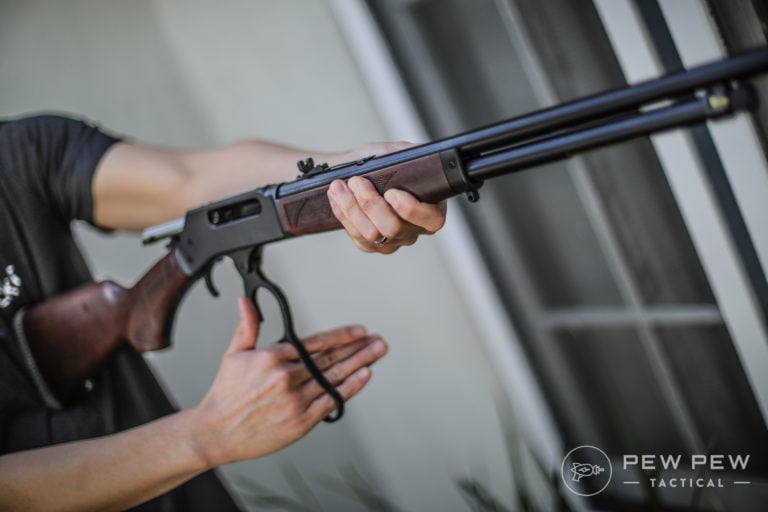





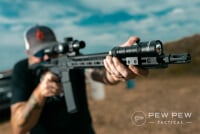






10 Leave a Reply
Is there any other 30 caliber round that can be used in a 30-30 rifle? Even if you file the point flat.
Year 2024, why is it so hard to find 30-30 rounds now? And I know it's mainly because of Biden years that prices have gone up. But the cost of bullets have doubled. But the 30-30 seems to be disappearing. My Marlin is my best and most used rifle. And since Trump is president now will we see a reduction in price.
Killed my First Elk in the Colorado Rockies in 1976. Used my Marlin 30-30. I learned a TON about shooting at elevation and severe incline with the old gal.
I also missed the biggest mule deer of my life (I'm 66) down range on the tank tables
of Ft. Carson in 1976.
So Live and learn I reckon.....
It's a shame that lever guns have gotten so expensive. Many of us started out deer hunting with a 30-30 because they were inexpensive yet reliable. I still have my 100 year anniversary Winchester that bought new. Still hunt with it too.
Waiting on the day when Savage or Ruger offer an affordable lever action for the poor boys like me.
The Rossi R95 is fantastic...light, nicely balanced, some extractor improvements on the bolt, a nice factory trigger and surprisingly accurate with ftx projectiles. The article doesn't do it justice. I highly recommend at least checking one out.
THE FIRST 30 30 WIN 94 WAS BOUGHT FOR ME WHEN I WAS 14 IN THE FEILD WE WERE STANDING AROUND AFTER A DEER DRIVE A FREND HAD WON IT AT THE STRANDQUIST SCHOOL DRAWING ON A DOLLAR TICKET 7500 BUCKS IT COST GREAT GUN I BET THEY DONT SELL TICKETS ON GUNS AT SCHOOLS ANY MORE.
I don’t know why Rossi M-92 doesn’t get the respect it deserves. I’ve got four of them. Two in .45 Colt, one in .44 Mag/.44 Spl, and one in .357 Mag/.38 Spl. All are well made, accurate (out to pistol caliber range), and dependable, not to mention lighter on the pocketbook. Additionally, Rossi has recently released a 30-30 lever gun as well. I believe that if someone handles a Rossi they’ll wonder why on Earth they’d spend more than necessary.
fyi , in 1976 I bought TWO Winchester model 94 .30-30’s for $150 ($75 each) at Best Products in Richmond, Virginia … gave one to my brother who took it back to Washington state and shot an elk with it !!! … they’re more than just a little ole deer rifle !!!
My favorite hunting rifle is my Winchester 1894 trapper, in 30-30. I’ve killed more deer with it than all of my other guns combined. It’s 16 inch barrel on the compact 94 receiver makes a beautiful woods gun.